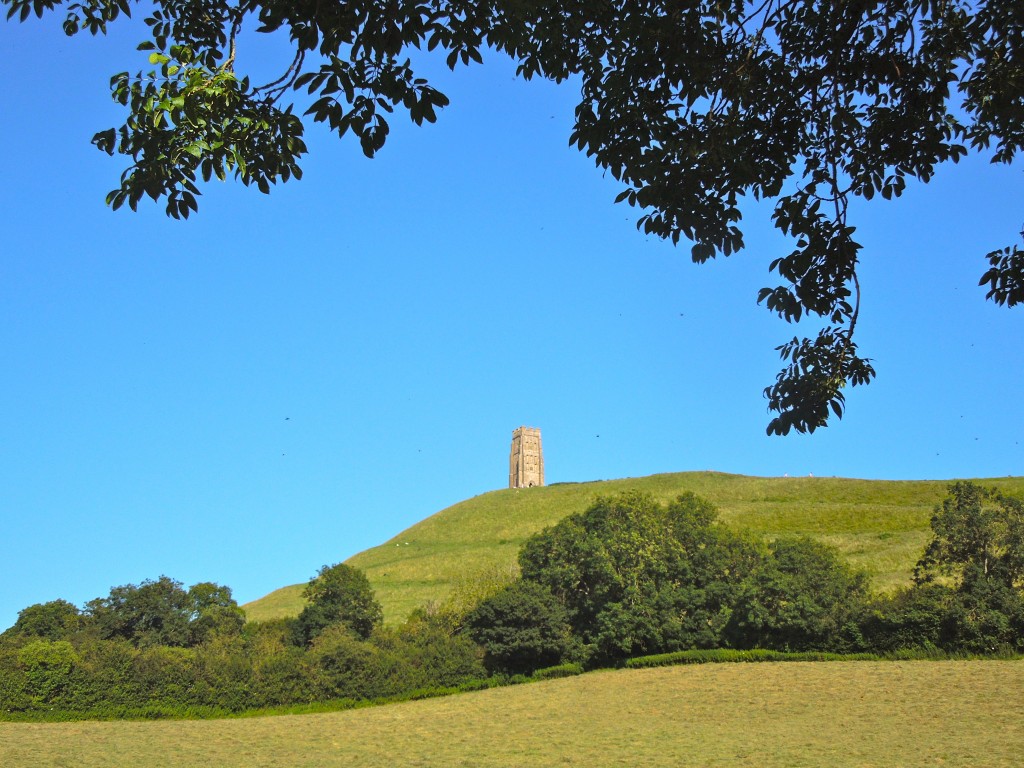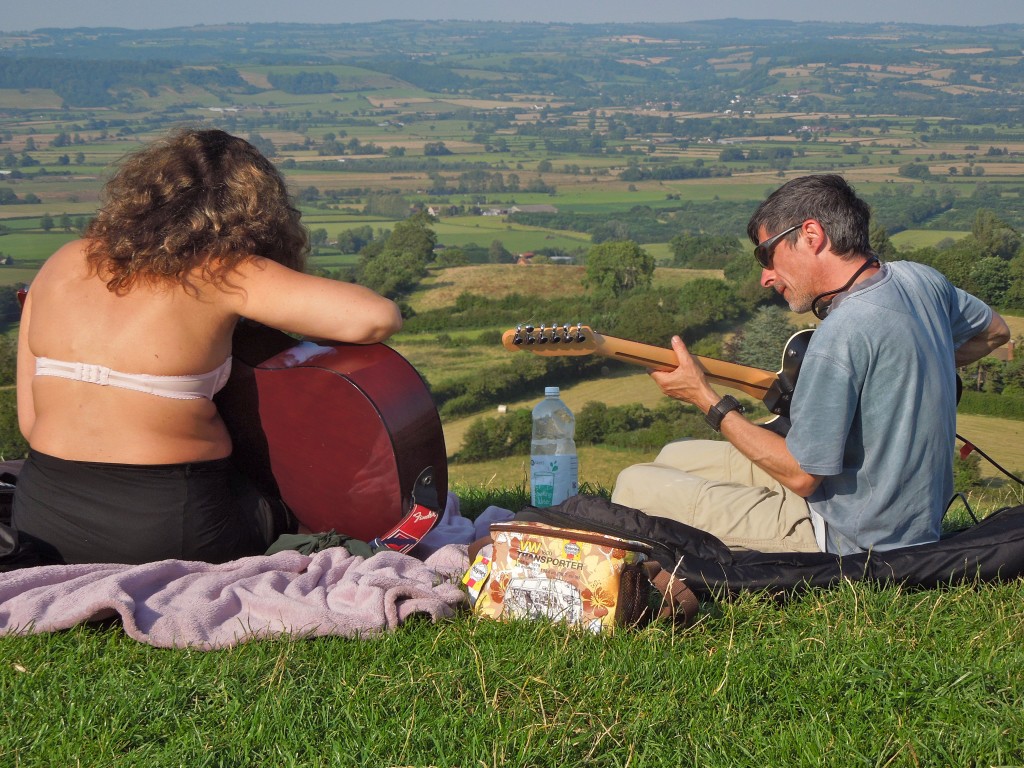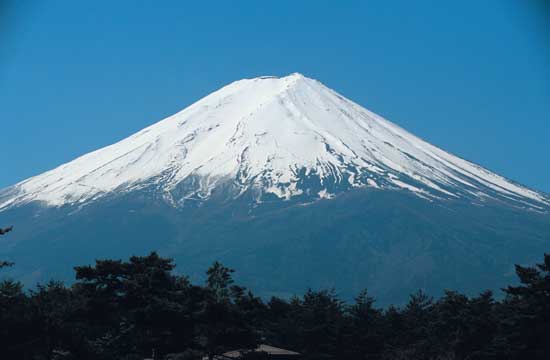
Glastonbury Tor ~ star of the Olympics!
Olympic heights
The opening of the 2012 Olympics on Friday night showcased England’s most sacred mount – Glastonbury Tor. It featured as the pastoral paradise of William Blake’s visionary poem, before the country became despoiled by the ‘satanic mills’ of the industrial revolution. ‘And did those feet in ancient times/ Walk upon England’s mountains green?’ run Blake’s opening words, in reference to an old legend about Jesus being brought to Glastonbury by his uncle, Joseph of Arimathea.
I happened to be staying in a bed and breakfast with a full view of the Tor just as it appeared on the television screen – with a crucial difference. The church tower on the real Tor had been replaced by an oak tree – the sacred tree of the Druids. What on earth was going on? Instead of a Christian monument was a shamanistic vision of the countries of the world (represented by 204 flags) unified beneath the World Tree. Wow!
Director Danny Boyle’s genius in pulling off this extraordinary feat was much in keeping with traditions concerning the Tor. It’s long been associated with King Arthur legends as the site of ancient Avalon, and it stands at the intersection of important leylines. it’s also believed to have a labyrinth which spirals up to the summit and which in pagan times may have been thought of as an entrance into the other world.
The Tor is a diminutive 518 ft, which makes it all the more remarkable that it carries so much presence and has accumulated so much folklore. I don’t think anyone forgets their first sight of it when they see it rise above the surrounding Somerset levels (once covered in water). Many people have come under its spell and found their lives changed as a result. For neo-pagans, it’s akin to Mecca.

On top of the Tor with a view over legendary Avalon
Getting high
Sacred mountains exist all around the world. The mountains reach up towards the sky, and for ancient man they were the nearest point on earth to heaven. On their summits the air was purer, worldly affairs far removed, and there was a sense of heightened spirituality.
Steven Sterba has written in to point out a number of sacred mountains around Europe: Mount Athos (Greece), Babia Gora (Poland), Brocken (Germany), Mount Etna (Sicily), Glastonbury Tor (Britain), Kebnekaise (Sweden), Olympus (Greece), Parnassus (Greece), Venusberg (German), and Mount Vesuvius (Italy).
It’s said that like much else ancient Japanese derived the notion of sacred mountains from China, where as far back as the fifth or fourth century B.C. Taoism had established the notion of five sacred mountains to honour the five directions (the usual four plus the centre). Buddhism later added sacred mountains of its own.
In Japan a major development took place in the seventh century, when the legendary En no Gyoja started the shugendo (mountain asceticism) tradition of ‘entering the mountains’ for spiritual practice. It combined elements of Buddhism, Taoism and kami worship, and out of their practice arose the sacred mountains of modern Japan.

One of the world's most famous sacred mountains ~ Mt Fuji (courtesy of adventures.bootsnall.com)
Mt Fuji
Independent of shugendo stands Japan’s most famous sacred mountain – Mt Fuji. A volcano with a symmetrical cone, it was awe-inspiring both visually and as a force of nature (it last erupted in 1707). At 12,388 ft, it’s the highest mountain in Japan, visible from surrounding areas in all directions.
No one knows for how long the mountain has been venerated. Its status as a sacred symbol stretches back into prehistory, and it stands supreme amongst Japan’s ‘three holy mountains’, towering above its companions Tateyama and Hakusan.
In terms of Shinto, Mt. Fuji is sacred to Princess Konohana Sakuya, whose symbol is the cherry blossom. In mythology she married the kami who descended from heaven, Ninigi no mikoto, thereby cementing the tie between sky and earth (i.e. invader and indigenous people). There is an entire series of shrines dedicated to her, called Sengen shrines. Some of these can be found around the base of Mount Fuji, but there are more than 1,000 in all across Japan. (The Fujiko sect by contrast worships the mountain itself as a sacred being.)
Mt Fuji has come to symbolise Japan, just as Glastonbury Tor was used to symbolise Great Britain at the Olympics. The lump of rock rearing upwards thus becomes a microcosm for the larger rock-island on which it stands. For nationalists that’s as far as it goes, but for universalists like myself there’s a further step to take: the large lump of rock floating in space that unites us all.
Many paths, one mountain top!
*****************************************************************
For a report on the Tor’s role in the Olympics, and some great photographs, see Huffington Post here.
For sacred mountains in general, see here. For further information about both Glastonbury Tor and Mt Fuji, see here.

While in the course of every person’s existence, they needs spiritual
improvement and development to some extent. Numerous individuals improve
it into a many who they might be whilst some really don’t, but everyone sights it ultimately, regardless if good now.